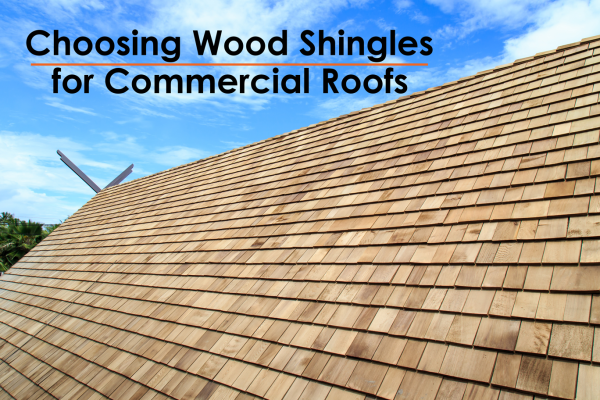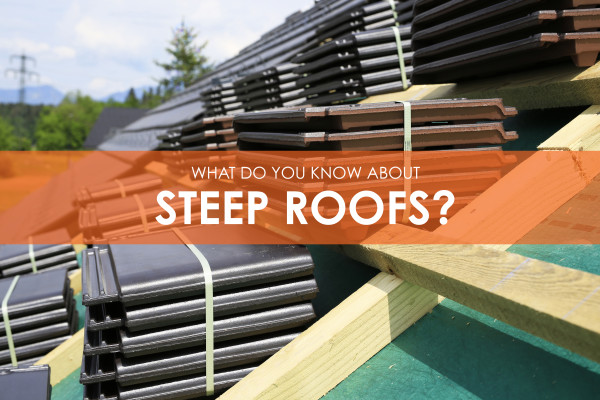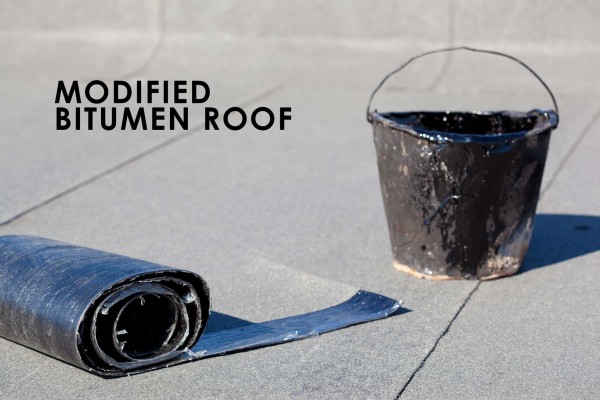Many people happily spend hours, or even days, picking out paint or wallpaper styles and colors. However, when it comes to picking out materials for a new roof, the options can seem complicated or overwhelming, especially when many shingles today are designed to resemble other materials. Here is a basic guide to the roofing materials you’re likely to be asked to choose from, to help you make your selection with confidence.
1. Asphalt shingles
Asphalt shingles, also referred to as composite shingles, are composed of an asphalt base coated with a fine layer of rock or ceramic material, which protects the asphalt and gives the shingles color. Asphalt shingles are the most common type of shingle used in the United States. Asphalt shingles are budget-friendly, easy to install, and energy efficient, and they come in multiple colors and designs; you can even get asphalt shingles that look like they’re made from other, more expensive, materials, so you can get the look you want at a more affordable price. Although asphalt shingles can break or crack fairly easily when exposed to extreme weather (hail or ice storms, high winds, etc.), they generally last between 20 and 30 years.
2. Fiberglass shingles
Fiberglass shingles are generally made of asphalt with a fine, glass fiber backing attached to it. They are extremely durable, even when exposed to inclement weather, and they have a class A fire resistance rating.
Fiberglass shingles tend to be less expensive than asphalt shingles, and you can get them in multiple colors and designs. However, it is particularly important to install fiberglass shingles correctly to prevent breakage; if you select fiberglass shingles, it’s recommended that you have them installed by professional roofing contractors.
3. Metal roofing
Metal roofing is extremely durable and can last up to three times longer than other roofing materials, even in harsh climates. Metal roofing comes in multiple styles and colors, it’s energy efficient, and in some areas, installation of a metal roof can increase your home’s resale value and lower the cost of your homeowner’s insurance.
The initial cost for metal roofing may be a bit higher than you’d pay for asphalt shingles, but many homeowners feel its durability and longevity balance out the additional cost.
4. Slate shingles
Slate shingles are tiles made of slate, an extremely durable natural rock. Slate is the most durable roofing material you can choose; a roof made of slate shingles can often last for upwards of 100 or more years. However, slate is also much heavier than other shingle materials, so it’s important to make sure your home can withstand the extra weight before installation. Slate shingles are more expensive than other roofing materials, and unlike other roofing materials, slate shingles do not come in a variety of colors; yet many homeowners find their appearance uniquely appealing.
5. Solar shingles
Solar shingles are a relatively new development. These shingles are designed to both protect your home from the elements and generate energy at the same time. You might expect them to look unusual, but manufacturers have found ways to design solar shingles to complement most home styles without making them look like science fiction sets.
Solar roofing can be quite expensive, although costs have been decreasing as the technology improves, and they require a trained professional to wire and connect them to your home’s electrical system. Many state, city, and federal tax credit incentives are available to homeowners who choose to invest in solar roofing.
6. Clay tiles
Clay tiles are most often used on homes featuring Spanish design elements. Brick red and terra-cotta orange are traditional clay tile colors, but they can be produced in a range of natural hues or glazed like pottery into brilliant shades. Although lighter than slate, clay tile is also a heavy material that requires sufficient support. Clay tiles are fireproof and relatively resistant to weather, but they may break if hit by flying debris. Clay tiles tend to be more expensive than other shingle materials and are typically used to create a desired aesthetic look.
7. Wood shingles
Wood shingles may be manufactured out of a variety of types of wood, including cedar, cypress, redwood, and pine, each with its own aesthetic look. They’re typically more energy efficient and resistant to the elements than asphalt shingles. Wood shingles tend to come with a higher price-tag than other shingle materials, and they require professional installation; they are also less fire resistant and can succumb to damaging elements, such as termites, rot, and mold, more easily than non-organic materials.
The final assessment of durability and effectiveness for roofing materials can be dependent upon your local climate’s effects; it’s probably best to ask your roofing contractor what types of shingles are recommended in your area. Once your choice is narrowed down, you can balance the cost of your preferred roofing material against the anticipated lifespan of your new roof to make a final decision.




